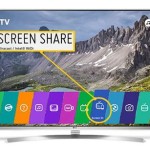How To Mirror Your Android Phone to Your Windows Laptop
Mirroring an Android phone to a Windows laptop can be a valuable tool for various purposes, ranging from presenting mobile content on a larger screen to simplifying tasks that are easier to manage with a keyboard and mouse. This process allows users to display the contents of their Android phone's screen on their laptop, enabling interaction with apps, viewing media, and even controlling the phone directly from the computer. Several methods exist to achieve this, each with its own advantages and disadvantages in terms of ease of setup, performance, and functionality. This article details different approaches to mirroring an Android phone to a Windows laptop, providing a comprehensive guide for users of all technical skill levels.
Before initiating the mirroring process, it is important to ensure both the Android phone and the Windows laptop are connected to the same Wi-Fi network. This is typically a prerequisite for wireless mirroring methods to function correctly. Additionally, verify that the Android device has Android version 5.0 (Lollipop) or later. Earlier versions may not support screen casting or may require additional software or workarounds.
Using the "Connect" Feature in Windows 10 and 11
Windows 10 and Windows 11 have a built-in feature called "Connect" that allows you to wirelessly project your Android phone's screen onto your laptop. This method is convenient because it doesn't require installing any additional software on your laptop, assuming the feature is already enabled.
To access the "Connect" feature, type "Connect" in the Windows search bar and open the "Connect" app. Alternatively, you can press the Windows key + K to directly open the connection panel. Ensure that your laptop is discoverable by other devices. If the "Connect" app is not present, you may need to install it as an optional feature. To do this, go to Settings > Apps > Optional Features > Add a Feature and search for "Wireless Display". Install the "Wireless Display" feature. Once installed, the "Connect" app should be accessible.
On your Android phone, navigate to the Quick Settings panel by swiping down from the top of the screen. Look for an option labeled "Cast," "Screen Mirroring," "Smart View," or a similar term, as the label may vary depending on the phone manufacturer. Tapping this option will initiate a search for available devices to cast to. Select your Windows laptop from the list of available devices. Upon selecting your laptop, a prompt may appear on your laptop's screen requesting permission to connect. Accept the connection request.
Once connected, the Android phone's screen will be mirrored onto the Windows laptop. Interaction with the phone can still occur directly on the phone, and the actions will be reflected on the laptop screen. The "Connect" app on the laptop provides options to pause, disconnect, or change the projection mode. Projection modes may include duplicate (mirroring), extend (treating the laptop as a second screen), or second screen only. However, the "Connect" feature often introduces some latency, which might be noticeable when playing fast-paced games or streaming video. The performance is largely dependent on the Wi-Fi network strength and the capabilities of both the phone and the laptop.
Possible issues include the laptop not being discoverable, poor performance, or intermittent disconnections. To troubleshoot, ensure both devices are on the same Wi-Fi network, restart both devices, and check for driver updates for the laptop's wireless adapter. Also, temporarily disable any firewalls or antivirus software to determine if they are interfering with the connection.
Using Third-Party Applications
Numerous third-party applications are available that provide more robust and feature-rich screen mirroring capabilities compared to the built-in Windows "Connect" feature. These applications often offer improved performance, lower latency, and additional functionalities such as remote control of the Android phone from the laptop.
One popular application is Vysor. Vysor allows users to control their Android phone from their computer using a USB cable or Wi-Fi. To use Vysor, you need to install the Vysor application on your Windows laptop and the Vysor Android app on your phone. Once installed, connect your Android phone to your computer via USB cable. Enable USB debugging on your Android phone. To enable USB debugging, go to Settings > About Phone and tap on the "Build number" seven times to unlock Developer Options. Then, go to Settings > Developer Options and enable USB debugging. When you connect your phone to your computer, a prompt will appear on your phone asking you to allow USB debugging; allow it. Once the phone is connected and USB debugging is enabled, Vysor will detect the phone and allow you to mirror the screen on your laptop.
Another popular option is ApowerMirror. ApowerMirror allows for both USB and Wi-Fi connections. Similar to Vysor, it requires installing software on both the Android phone and the Windows laptop. ApowerMirror supports screen recording, screen capturing, and remote control of the Android phone from the laptop. To use ApowerMirror via Wi-Fi, ensure both devices are on the same network and launch the ApowerMirror app on both devices. The app will search for available devices. Select your laptop from the list, and a mirroring request will be sent to your phone. Accept the request to initiate the mirroring process.
Other alternatives include AirDroid, which offers a suite of features including screen mirroring, file transfer, and remote control, and TeamViewer, which is primarily known for remote desktop access but also supports mirroring Android devices. When selecting a third-party application, consider factors such as the desired features, price (some applications offer free versions with limited functionality), and user reviews regarding performance and stability.
The primary advantage of using third-party applications is the improved performance and added functionality compared to the built-in Windows "Connect" feature. However, these applications often require installation and may involve a subscription fee for full access to all features. It's crucial to download these applications from reputable sources to avoid malware or security risks.
Using a USB Cable for Mirroring
Mirroring an Android phone to a Windows laptop via a USB cable offers a stable and low-latency connection, making it ideal for tasks that require precision or real-time interaction, such as gaming or using graphically intensive applications. This method also avoids dependence on a Wi-Fi network, which can be beneficial in areas with unreliable wireless connectivity.
As mentioned previously with Vysor, mirroring through a USB cable requires enabling USB debugging on the Android phone. This process involves navigating to the Developer Options menu in the phone's settings. The steps for enabling Developer Options are the same: go to Settings > About Phone and tap on the "Build number" seven times to unlock Developer Options. Then, go to Settings > Developer Options and enable USB debugging.
Once USB debugging is enabled, connect the Android phone to the Windows laptop using a USB cable. The laptop may require installing drivers for the Android phone. Windows typically automatically searches for and installs the necessary drivers. If drivers are not installed automatically, they can usually be downloaded from the phone manufacturer's website. After connecting the phone, a prompt may appear on your phone asking to trust the connection. Always trust the connection when connecting to your personal computer to ensure seamless mirroring.
After installing the necessary drivers, use a mirroring application such as Vysor, ApowerMirror, or similar software. The application will detect the connected phone and allow you to mirror the screen onto the laptop. The quality and responsiveness of the mirroring will generally be superior compared to wireless methods, due to the direct connection and lower latency. Using scrcpy, a free and open-source tool, can also mirror the Android device. You can download the tool from GitHub and run through the command line. This tool doesn't require you to install anything on your Android phone, making it a secure option.
While using a USB cable provides a reliable connection, it does restrict the mobility of the phone, as it needs to remain physically connected to the laptop. Additionally, the laptop needs to have a compatible USB port. Ensure that the USB cable is of good quality to prevent connection issues or data transfer problems.
In summary, mirroring an Android phone to a Windows laptop can be achieved through several methods: utilizing the built-in "Connect" feature in Windows, employing third-party applications, or using a USB cable for a direct connection. The optimal method depends on the user's specific needs and priorities, such as the desired level of performance, features, and convenience.

How To Mirror Android Your Windows 11 Pc Guiding Tech

How To Screen Mirror Android Windows Pc

How To Mirror Your Android Screen Pc Or Mac Without Root

An Easy Step By Guide To Mirror Android Windows 11

Screen Mirror Android To Laptop With Windows Phone And Tablet

Swiftly Cast Android To Windows 10 Pc With 5 Approaches

Screen Mirror Your Galaxy Phone And Use Android Apps On Windows 10 Pc With Link To Samsung Ca

Share Screen On Android How To Cast My With A Windows 10 Pc

How To Mirror The Screen Of Your Android A Pc Neowin

How To Cast Mirror Your Android Screen Windows 8 10 Pc








